Search
Remove Ads
Advertisement
Summary 
Loading AI-generated summary based on World History Encyclopedia articles ...
Search Results

Definition
Serpent Mound
Serpent Mound (also known as Great Serpent Mound) is an archaeological and historic site in Peebles, Ohio, USA, enclosing an effigy mound 1348 feet (411 m) long in the shape of a serpent, the largest effigy mound of a serpent in the world...
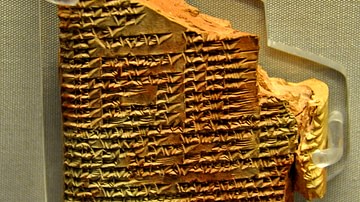
Article
The Myth of Etana
The Myth of Etana is the story of the Sumerian antediluvian King of Kish who ascends to heaven on an eagle to request the Plant of Birth from the gods so that he might have a son. Etana is named as the first king of Kish in the Sumerian King...
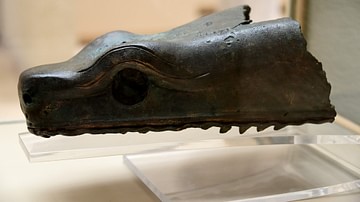
Image
Head of a Serpent from the Serpent Column
This bronze serpent originally belonged to the "Serpent Column" at the Hippodrome of Constantinople, Sultanahmet, Istanbul, in modern-day Turkey. The column was erected to commemorate the Greeks who fought and defeated the Persian Empire...
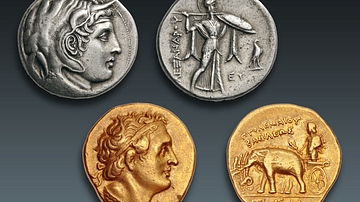
Image
Elephant Symbolism on the Coins of Ptolemy I
Two coins issued by Ptolemy I: 1) A portrait of the deified Alexander the Great wearing an elephant scalp on his head, with a ram’s horn over his temple, and an aegis (sacred fleece) over his shoulder; on the reverse Athena Alcidemus, the...

Definition
Jörmungandr
Jörmungandr is the Midgard Serpent (also World Serpent) in Norse mythology who encircles the realm of Midgard. He is the son of the god Loki and the giantess Angrboða and brother of the great wolf Fenrir and Hel, Queen of the Dead. At Ragnarök...

Article
Egyptian Gods - The Complete List
The gods and goddesses of Ancient Egypt were an integral part of the people's everyday lives for over 3,000 years. There were over 2,000 deities in the Egyptian pantheon, many whose names are well known - Isis, Osiris, Horus, Amun, Ra, Hathor...
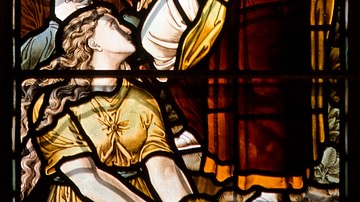
Definition
Nehushtan
According to the Bible, Nehushtan was a metal serpent mounted on a staff that Moses had made, by God's command, to cure the Israelites of snake bites while wandering in the desert. The symbol of snakes on a staff or pole is a motif that is...

Article
The Mayan Pantheon: The Many Gods of the Maya
The pantheon of the Maya is a vast collection of deities worshipped throughout the regions of Yucatan, Quintana Roo, Campeche, Tabasco, and Chiapas in Mexico and southward through Guatemala, Belize, El Salvador and Honduras. These gods informed...

Definition
Apophis
Apophis (also known as Apep) is the Great Serpent, enemy of the sun god Ra, in ancient Egyptian religion. The sun was Ra's great barge which sailed through the sky from dawn to dusk and then descended into the underworld. As it sailed through...
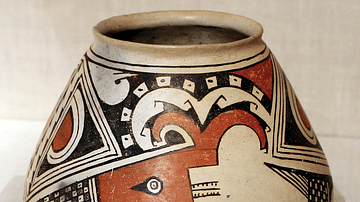
Image
Horned-Serpent Pottery Vessel
A pottery vessel decorated with a horned serpent. The serpent, horned serpent, and water serpent figure is common to the legends of all Native American Nations in North America. From the United States or Mexico, c. 1280 to c. 1450. (Art Institute...